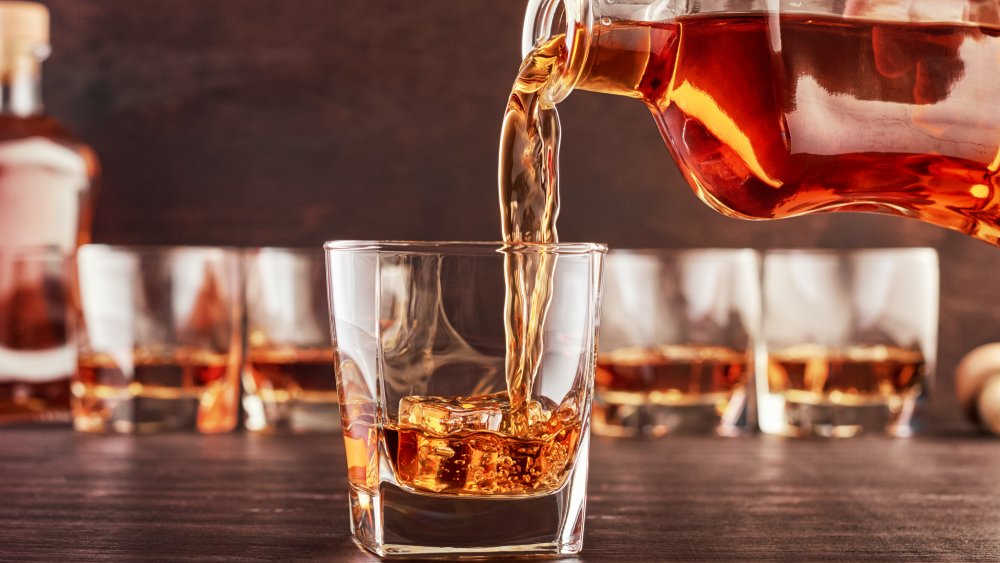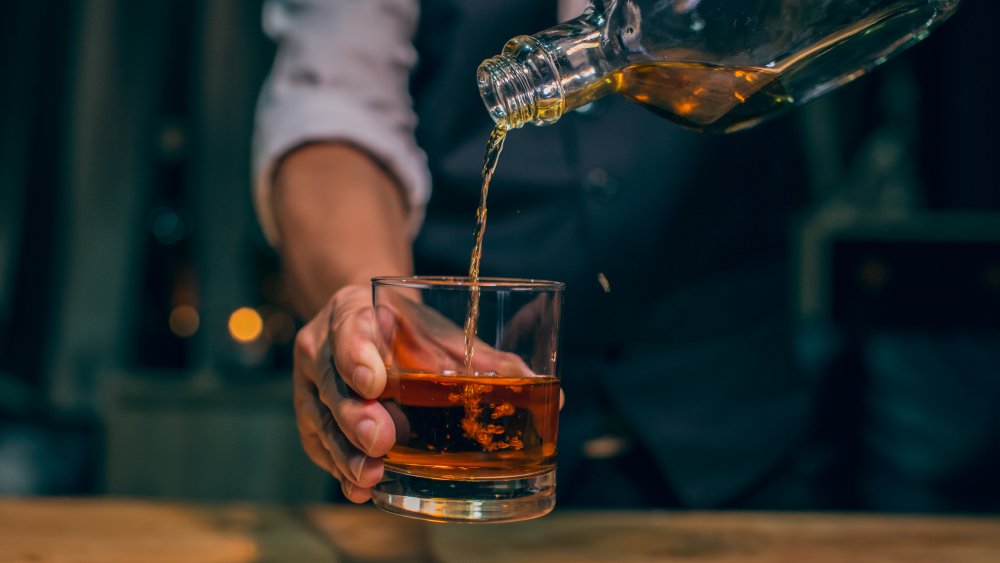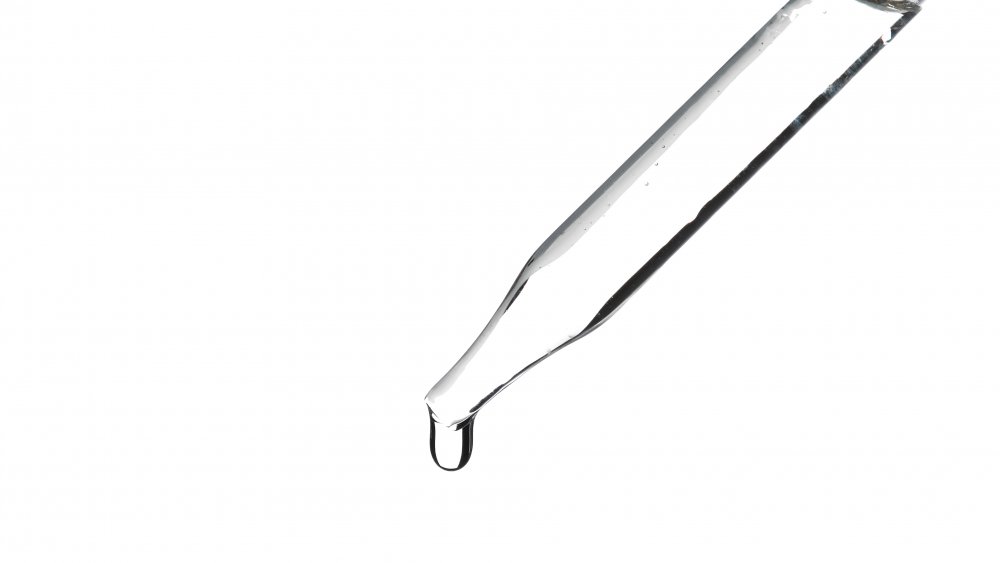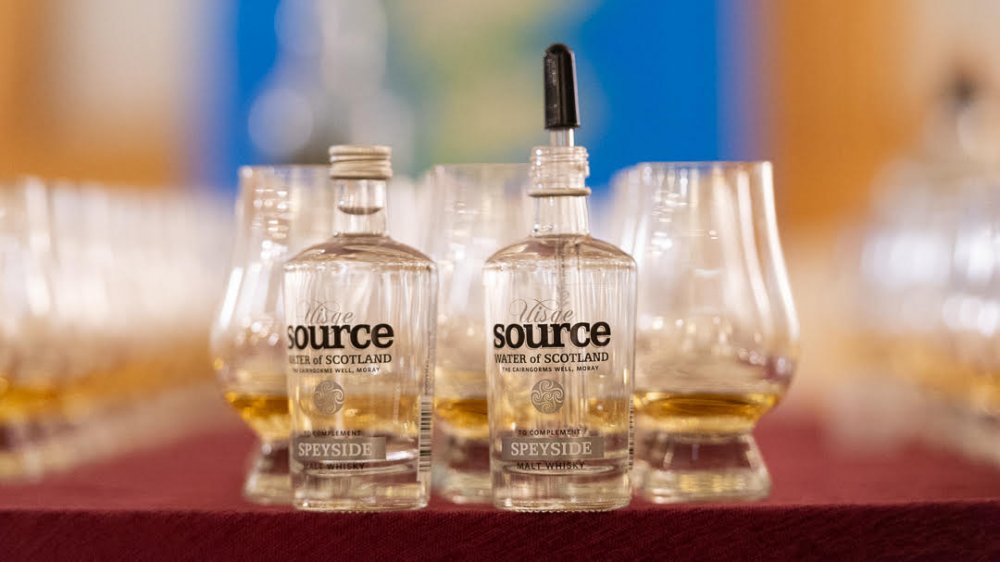The Real Reason You Should Add Water To Your Whiskey
True whiskey connoisseurs will tell you that adding a couple of drops of water to your glass actually improves and enhances the taste of the drink. A popular phrase used to talk about the phenomenon is that a drop or two of water helps to "open up" the taste of the whiskey.
This may seem counterintuitive, and logic would dictate that it's just watering down the flavor. However, it's not just an urban legend — science backs the theory up.
When water was added to the whiskey, guaiacol, a compound partially responsible for the peaty smell and flavor of scotch whisky, was more present at the surface of the whiskey, while it was driven away from the surface when water wasn't added. When the guaiacol is at the surface of the whiskey, it's easier for the nose and palate to experience the flavor and smell that it imparts to the drink. The scientists report that this reaction occurs when the percentage of alcohol is lowered by the water (via LiveScience).
What type of water to add to whiskey
It's acknowledged that most whiskey lovers just "wing it" when it comes to how much water is best to add, but there's even a website with a built-in formula calculator to help you determine e your preferred proof (a measurement of twice the alcohol content in a spirit) (via Whisky Advocate). Because different whiskeys have different alcohol contents, the amount of water that should be used can vary as well.
Of course, you shouldn't be adding water from just any source. If you're spending big bucks on a bottle of whiskey, it would be a shame to spoil it with water from the tap, especially if you live in a place where the tap water has a noticeable flavor (via Vice). In fact, some entrepreneurs have even begun selling pure Kentucky stream water to be mixed with bourbon.
Artisan droppers for whiskey water
You may be asking yourself what type of instrument you'd be expected to use to introduce some water to your whiskey. Pouring water out of a bottle seems somewhat heavy-handed, and using something like a soup spoon doesn't seem particularly elegant or well-suited for a tipple either.
If you're a frequent whiskey drinker, you might consider investing in some sort of dropper or pipette to use as your tool of choice for adding a bit of water to the whiskey. There's no better way to ensure a precise level of control than being able to control the amount of water you're adding — down to the drop.
Fancy droppers have come on the market in recent years, such as the Angel's Share Whiskey Dropper (via Sip Dark). Instead of a rubber top, the dropper is all glass and is made by hand in Scotland. It's on the small side, measuring 200 millimeters, and uses suction to release a drop at a time. Submerge it in water to fill it, place your finger over the hole in the glass, and position over your glass to drop the water in, drop by drop when you remove your finger just slightly. The top of the dropper is fashioned to look like the top of a whiskey pot still, something that a true connoisseur will notice (via Whiskey Still). If you're clumsy or you've had a few whiskeys already, it might pay to steer clear of this creation as it appears to be quite fragile.
There are other unique ways to add water to your whiskey
If you don't want to shell out the same price you would pay for a bottle of whiskey for a fancy version and would prefer to go the generic eyedropper route, a rubber-topped eyedropper is something that you can easily pick up at a pharmacy or drug store. However, you can also purchase an eye dropper that comes attached to a bottle as the dispersal method with a product called Uisge Source Water of Scotland (via Thrillist). Like the aforementioned Kentucky stream water used to mix with bourbon, Uisge Source (Uisge being the Gaelic word for "water," via Uisge Source) offers a line of three types of water that come from three different regions in Scotland: Islay, Speyside, and Highland.
Each of these regions produces whiskey with different flavors and characteristics, and each water is specifically sourced for whiskey from that particular region. The Islay water, for example, has slightly higher levels of natural acids that help to cut the smokiness of Islay scotches. Water from the Speyside region, on the other hand, contains soft (low-mineral) water.



